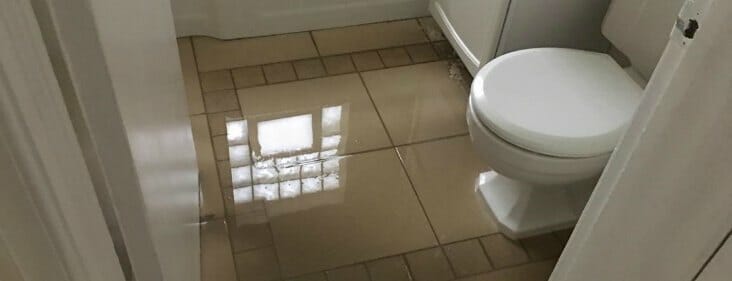How do you feel when it comes to How to Repair and Prevent Bathroom Water Damage??

Water damage typically happens in the washroom because of the water utilized everyday. In some cases, the damage could be a little mold from the shower. Other times, it's huge damage on your floor. Whatever it is, it is constantly great to understand the cause as well as prevent it before it takes place.
This guide will undergo several of the common root causes of water damage in the washroom. We will certainly also examine what you can do to prevent these reasons from harming your shower room. Let's dive in.
These are the typical reasons you would have water damage in your washrooms as well as how you can detect them:
Excess Moisture
It's amazing to have that lengthy shower as well as splash water while you hem and haw as well as act like you're performing, yet often these acts could create water damage to your shower room.
Splashing water around can create water to visit corners as well as form mold and mildews. View just how you spread excess moisture around, and also when you do it, clean it up to prevent damages.
Fractures in your wall surface tiles
Washroom wall tiles have been specially made for that function. They shield the wall from dampness from people taking showers. Nonetheless, they are not unbreakable.
Sometimes, your shower room wall ceramic tiles crack as well as permit some wetness to seep right into the wall. This can potentially damage the wall if you do not take any activity. If you notice a fracture on your wall surface tiles, repair it instantly. Do not wait until it ruins your wall surface.
Overflowing bathrooms and also sinks
As human beings, in some cases we make blunders that could trigger some water damage in the washroom. For example, leaving your sink faucet on can cause overflowing and also damages to other parts of the shower room with dampness.
Also, a defective commode can cause overflowing. For instance, a damaged bathroom handle or various other parts of the tank. When this occurs, it might harm the flooring.
As quickly as you notice an overflowing sink or toilet, call a plumbing professional to aid deal with it right away.
Ruptured or Dripping Pipelines
There are several pipelines lugging water to various parts of your washroom. Some pipelines take water to the commode, the sink, the faucets, the shower, and also many other places. They crisscross the small area of the restroom.
From time to time, these pipes might get rustic as well as burst. Other times, human action could cause them to leakage. When this takes place, you'll locate water in the edges of your shower room or on the wall surface.
To identify this, watch out for bubbling walls, molds, or mildew. Call a specialist emergency situation plumbing technician to repair this when it occurs.
Roofing system Leaks
In some cases, the problem of water damage to the bathroom might not come from the restroom. As an example, a roofing leakage might create damages to the restroom ceiling. You can identify the damages done by considering the water spots on the ceiling.
If you locate water discolorations on your ceiling, examine the roof covering to see if it's harmed. Then, call a professional to assist solve the issue.
Final thought
Water damage to your restroom can be frustrating. However, you can manage it if you avoid several of the reasons stated in this overview. Call an expert emergency situation plumbing technician if you see any type of severe damage.
How to Prevent Water Damage in Your Bathroom?
Water damage repair is an expensive, meticulous, and lengthy process. Unfortunately, bathrooms are the most susceptible rooms to water damage due to toilets, showers, and sinks. Pipes and fixtures wear out over time and are not immune to damage. But all is not lost, as there are ways to prevent water damage from occurring in your bathroom.
Check Your Plumbing
Nothing lasts forever, especially pipes, which can rust and begin leaking over time. You should periodically conduct pipe inspections and pay attention for any musty smells or water stains that may indicate you need water damage repair. Here are some things to check:
Frequently test valves for your toilet, shower, and sink to ensure they are properly working. Check faucet supply lines hidden under vanities and replace when needed. Replace cracked or deteriorating caulking along sinks, tubs, and showers. If you notice a clog in your sink, call in a professional. Since you can’t check the pipes in the wall, keep an eye out for stains, drywall bubbling, musty smells, and excess moisture; if the bathroom is on a second level, check the ceiling of the room directly below for these signs. Don’t Overwork Your Toilet
One of the most common reasons bathrooms need water damage repair is due to overflowing toilets. Save yourself the hassle of cleanup by being mindful and not pushing your toilet to extreme limits. If you have young children, it is especially important to keep an eye on them when they are in the bathroom and to teach them how to avoid clogging the toilet. Here are some more tips to help prevent your toilet from overflowing:
If you have a septic tank, only use septic-safe toilet paper Do not flush anything down the toilet besides toilet paper; items like diapers and sanitary napkins will clog the piping Pay attention to your toilet’s water level: If it’s low, it could mean it is partially clogged or that there is a crack in the toilet bowl https://www.alure.com/home-improvements-blog/resources/how-to-prevent-water-damage-in-your-bathroom

I was introduced to that write-up on How to Repair and Prevent Bathroom Water Damage? from a good friend on a different web address. Sharing is caring. Helping others is fun. Thank-you for your time invested reading it.
Sink issues? Expert consultation here.